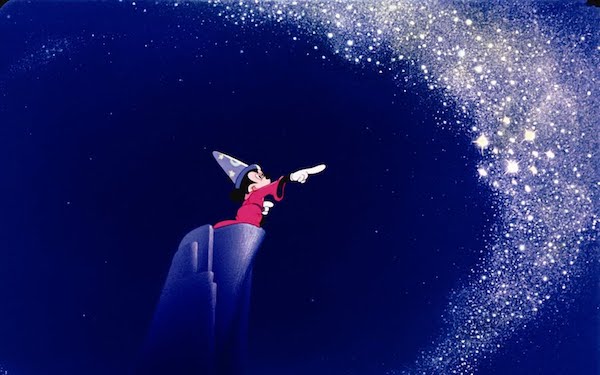

By Thomas Quillfeldt
We’re feeling all classical here at Laced thanks to our work with Merregnon Studios on bringing the orchestral suites Final Symphony and Symphonic Fantasies Tokyo (based on the music of Final Fantasy, Kingdom Hearts and other JRPGs) to vinyl and CD.
Classical music might not seem like it lives very close to video games—it’s difficult to picture the stereotypical Mahler fan settling in for a session of Overwatch. But the two arts have been cross-pollinated many times over the last few decades, and not just in terms of game music entering the classical concert hall.
Here are nine of the most artful, memorable and occasionally silly uses of classical music in games.
Catherine – Various (Bach, Beethoven, Chopin, Dvořák, Handel, Holst, Mussorgsky, Rossini)
2011’s Catherine is a Japanese-developed PlayStation 3 puzzle game that oozes oodles of quirky oddness By day, you are a drippy bloke who drinks too much and spends his evenings time brooding in bars. By night, you are a semi-naked man with ram’s horn and clutching a pillow who has to ascend nightmarishly fiendish puzzle towers—whilst zany remixes of popular classical music ratchets up the sense of disorientation. The above track is a standout: The Hut on Fowl's Legs (Baba-Yaga) from Pictures at an Exhibition by Modest Mussorgsky.
Resident Evil – Moonlight Sonata (Ludwig van Beethoven)
The original Resident Evil—released in 1996, remade in 2002 and remastered in 2015—nailed its aesthetic vision of video game horror, borrowing from cinema as well as older games such as Sweet Home and Alone in the Dark. To emphasise the loneliness of the evil residence itself—the Raccoon Forest mansion—one of two possible characters plays a famous passage from the first movement of Beethoven’s Piano Sonata No. 14. The sombre tune lends an elegance to proceedings, giving players a sense of grave solitude that went missing as the series progressed.
The Evil Within – Clair de Lune (Claude Debussy)
Developed as the spiritual successor to the much celebrated Resident Evil 4, 2014’s The Evil Within borrows certain musical ideas (among other things) from the venerable horror series: namely that save room music should elicit an anxious calm in the player—half soothing, half unsettling; and the notion that there is something spooky about classical piano music playing in isolated places. In this instance, the third movement of Debussy’s Suite bergamasque can be heard as if played through a grainy old time radio.
Valiant Hearts: The Great War – Various (Brahms, Offenbach)
Ubisoft’s touching point ’n click adventure Valiant Hearts: The Great War—a rare video game exploration of the First World War—features a poignant and beautiful original soundtrack. It intersperses this with a mad dash of musical humour during its car chase sequences: whilst you veer left and right to avoid shells and other vehicles, several choice cuts of classical music add to the mayhem, including Johannes Brahms’ Hungarian Dance No.5 and the piece best associated with the can-can dance, the Infernal Galop from Jacques Offenbach’s Orpheus in the Underworld (playing in the video above).
Elite – The Blue Danube (Johann Strauss II)
If you think the original Elite is looking a bit dated (released in 1984 on the BBC Micro and Acorn Electron), consider that (still) one of the most recognisable pieces of music in the world—The Blue Danube by the king of the schmaltzy waltz, Johann Strauss II—is 150 years old. The piece was included in the seminal space game as a nod to a similar sequence in Stanley Kubrick’s hugely aesthetically influential 1968 film, 2001: A Space Odyssey.
Eternal Sonata – Various (Frédéric Chopin)
The lush looking 2007 JRPG Eternal Sonata not only heavily features the music of 19th Century composer Frédéric Chopin—its storyline starts with a fictionalised version of the Polish piano whizz on his deathbed, dreaming up a fantasy world. The game’s eight chapters are based on various Chopin compositions (such as the Raindrop prelude, as in the video above) which are introduced with a montage of real world imagery and information about his life. Character names are music-based, for instance the not-exactly-subtle ‘Count Waltz of Forte’.
Peggle – Ode To Joy / Symphony No. 9 (Ludwig van Beethoven)
The development team behind PopCap’s 2007 puzzle game Peggle took sound very seriously—all the plops, plinks and plunks were carefully pored over to provide just the right feel. But there turned out to be a very simple way to bring pure joy to players as they approached the end of each level: blast them with the loud choral bit from the final movement of Beethoven’s ninth symphony.
Fantasia Music Evolved – Various (Bach, Dvořák, Liszt, Mussorgsky, Tchaikovsky, Vivaldi)
Fantasia Music Evolved—a motion-controlled conducting game featuring classical and contemporary music—is by all accounts a magical musical experience that was perhaps a bit unlucky to have been released around the 2014 launch of the Xbox One amidst controversy around the formerly mandatory Kinect controller (on which the game relies). Dance Central and Rock Band developer Harmonix included a mixture of genres, with Fallout 4 composer Inon Zur overseeing new arrangements. Of the pieces featured in the 1940 Disney film Fantasia, only Modest Mussorgsky’s Night on Bald Mountain, made it into the game’s tracklist.
Kingdom Hearts 3D: Dream Drop Distance – Various (Beethoven, Dukas, Mussorgsky, Tchaikovsky)
Given that the Kingdom Hearts franchise is predicated on numerous Disney properties, it was no surprise to see its Nintendo 3DS entry, Dream Drop Distance, dip into the universe of the 1940 classical music film Fantasia. Gamers are treated to Mickey Mouse in one of his most iconic roles (and outfits) as The Sorcerer's Apprentice, soundtracked by Paul Dukas’s famous 1897 work of the same name.

